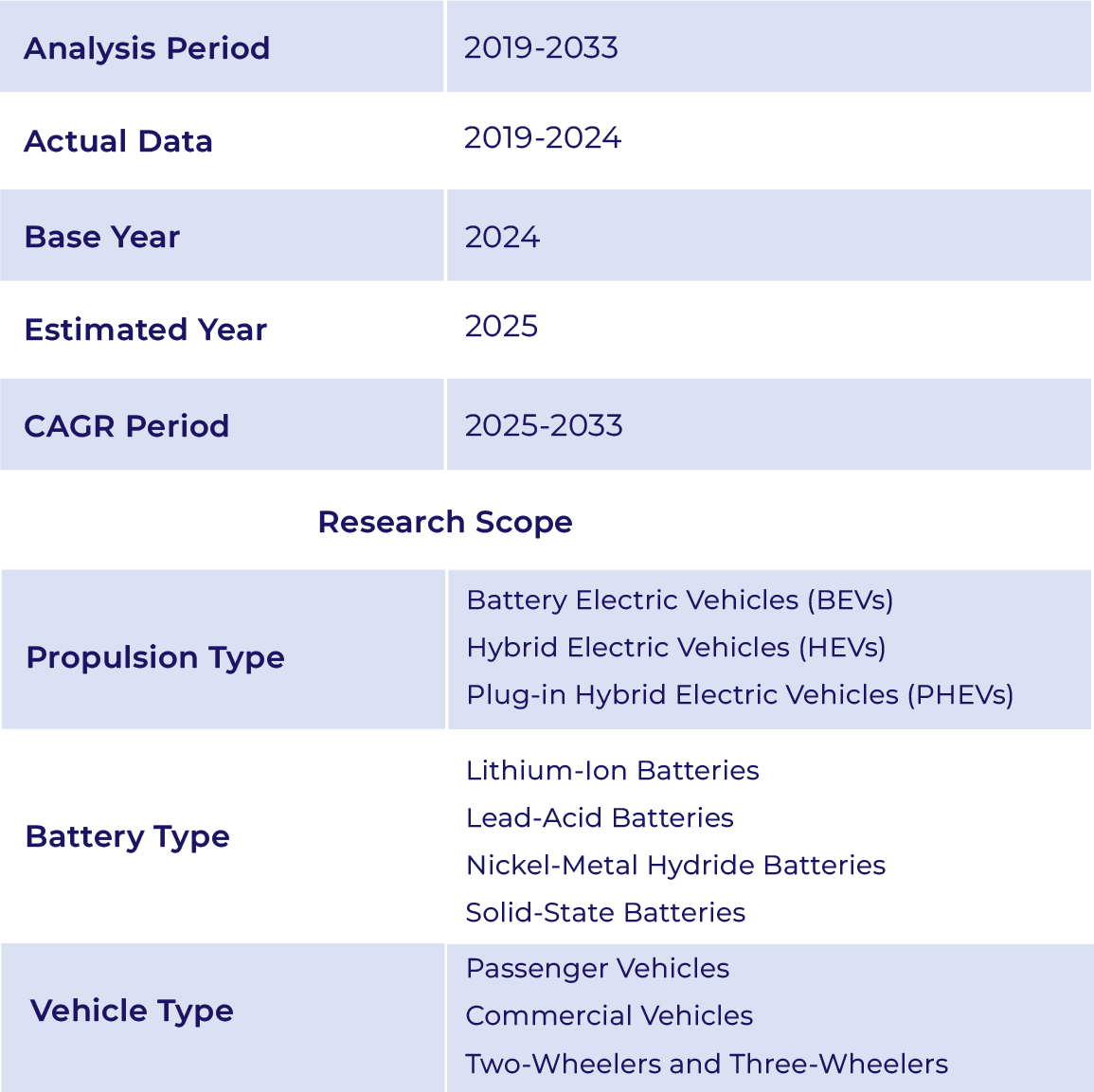US Electric Vehicle Battery Market Growth and Performance
- In 2024, the US EV battery market size is expected to achieve a market revenue of US$ XX million.
- This market is projected to register a compound annual growth rate (CAGR) of XX%, resulting in a forecasted market value of US$ XX million by the end of 2032.
US Electric Vehicle Battery Market Outlook
The US electric vehicle is poised for transformative growth in 2025, fueled by surging EV demand and substantial investments in domestic battery production. Industry giants such as Panasonic, Samsung, SK On, Ford, Honda, Hyundai, Stellantis, and Toyota are spearheading ten new manufacturing plants. This expansion will boost the nation’s battery production capacity by 90% compared to 2024, reaching an impressive 421.5 gigawatt-hours annually. The ramp-up in production strengthens supply chain resilience and reduces reliance on foreign imports. However, political and economic uncertainties, including potential shifts in federal policies under the Trump administration and recent battery plant cancellations by Kore Power and Freyr, pose challenges. Despite these hurdles, analysts remain optimistic, citing ongoing construction and sustained investments as key drivers of market momentum. Additionally, the US Department of Energy (DOE) has allocated $70.8 million to advance battery recycling and modernize manufacturing, reinforcing the nation’s commitment to a sustainable EV future.
US Electric Vehicle Battery Market Drivers
The market growth is primarily fueled by progressive government policies, rapid technological advancements, and increasing consumer adoption of EVs. The DOE’s investment aims to accelerate battery recycling, modernize manufacturing plants, and support small- and medium-sized manufacturers (SMMs). In parallel, the Inflation Reduction Act has allocated $50 million to upgrade vehicle production facilities in major automotive hubs, furthering sustainable manufacturing initiatives.Breakthroughs in battery technology are redefining the industry. Innovations such as graphene-based batteries, structural component batteries, and cobalt-free lithium-ion alternatives promise enhanced efficiency, longer lifespans, and a reduced environmental footprint. Companies like Graphenano are leading in graphene battery development, offering ultra-fast charging capabilities. Meanwhile, researchers at Chalmers University are integrating battery components into vehicle structures, optimizing weight and energy efficiency. Additionally, advancements like silicon anode batteries and seawater-derived battery materials are poised to revolutionize performance and sustainability, cementing the US’s position as a leader in EV battery innovation.
US Electric Vehicle Battery Industry Trends
The industry is undergoing rapid transformation, driven by cutting-edge innovations and shifting market dynamics. A major trend is the transition to sustainable battery materials. The University of Texas has developed cobalt-free batteries using nickel, aluminum, and manganese to address ethical and cost concerns. Meanwhile, researchers at the University of Eastern Finland have pioneered silicon anode batteries derived from barley husk ash, boasting ten times the capacity of conventional graphite anodes.Fast-charging technology is another game-changer. NAWA Technologies’ Ultra-Fast Carbon Electrode, capable of charging a battery to 80% in just five minutes, exemplifies the industry’s drive toward minimizing charging times and enhancing user convenience. Additionally, battery recycling and second-life applications are gaining momentum, bolstered by DOE funding initiatives aimed at reducing dependence on virgin raw materials. These trends, coupled with increased investments in domestic battery manufacturing, signal a dynamic and innovative future for the US Electric Vehicle (EV) Battery Industry.
US Electric Vehicle Battery Industry Development
US EV battery companies are prioritizing innovation, strategic partnerships, and localized production to strengthen the domestic supply chain and enhance battery technology. Leading automakers and battery manufacturers are making significant investments to expand capacity and improve efficiency.For instance, on December 2, 2024, General Motors (GM) and LG Energy Solution extended their long-standing partnership to develop prismatic battery cells. This collaboration aims to enhance EV battery efficiency, reduce weight, and simplify manufacturing processes. GM will integrate this technology into its future EV lineup while continuing operations at its Ultium Cells plants in Ohio and Tennessee. By diversifying battery chemistries and form factors, GM is reinforcing its electrification strategy.
Similarly, Hyundai Motor Group and SK On announced on April 25, 2023, their joint venture to build an EV battery cell facility in Bartow County, Georgia. Expected to begin production in late 2025, the plant will have an annual capacity of 35 GWh—enough to support 300,000 EVs—further strengthening US battery production capabilities.







